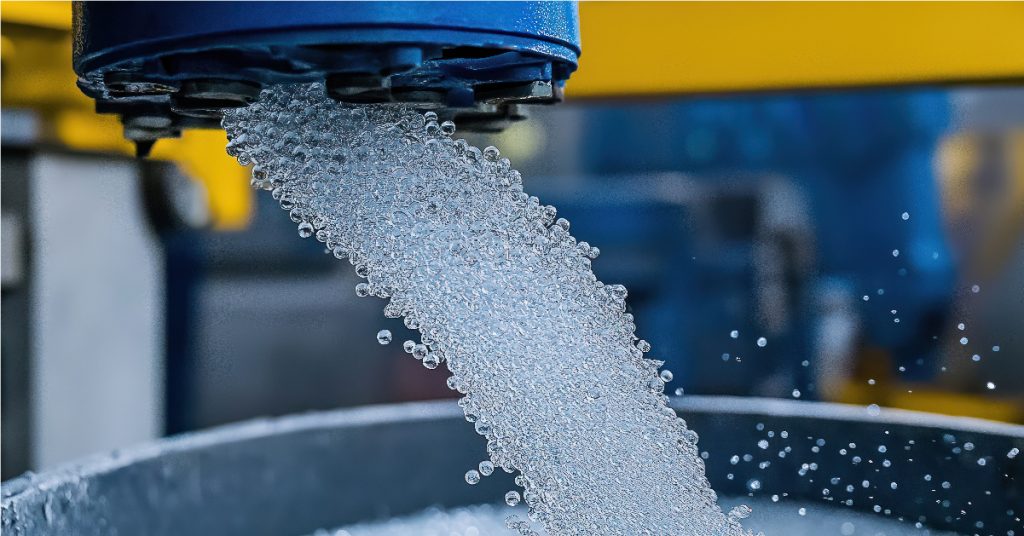Indonesia is one of Southeast Asia’s largest consumers and producers of sugar. With rising demand from food and beverage industries, pharmaceutical companies, and households, ensuring the quality and purity of sugar has become a national priority. Among the many methods employed in the refining of sugar, the ion exchange process stands out as an efficient, reliable, and sustainable technique.
This blog explores how the ion exchange method plays a crucial role in modern sugar refining, especially in the Indonesian context, where local production must meet increasing quality standards and environmental regulations.
Understanding the Refining of Sugar
The refining of sugar is the process of purifying raw sugar obtained from sugarcane or sugar beet. Raw sugar typically contains colorants, ash, organic matter, and other impurities. These elements not only affect the taste and appearance of sugar but also its usability in high-precision applications like food manufacturing and pharmaceuticals.
The sugar refining process involves several steps, including clarification, decolorization, demineralization, and crystallization. Over time, technologies like ion exchange have been integrated into these stages to achieve higher purity and operational efficiency.
The Role of Ion Exchange in Sugar Refining
Ion exchange is a chemical process where unwanted ions are replaced with more desirable ones using resin beads. In the context of sugar refining, ion exchange is primarily used during the decolorization and demineralization stages.
Here’s how the process fits into the refining of sugar:
1. Demineralization
During sugar production, raw juice contains minerals like calcium, magnesium, potassium, and various salts. These dissolved minerals, if not removed, can interfere with crystallization and degrade product quality.
Ion exchange resins effectively remove these minerals by exchanging them with hydrogen and hydroxide ions, leading to high-purity syrup. This step is particularly crucial in producing high-grade white sugar, which requires minimal ash content.
2. Decolorization
The brown color in raw sugar is primarily due to organic compounds such as polyphenols and amino acids. These compounds are not only undesirable from a cosmetic standpoint but can also affect flavor and shelf life.
Specially designed ion exchange resins absorb these colorants, helping achieve a clear, colorless syrup that is ideal for crystallization into refined white sugar.
3. Stabilizing the Product
Ion exchange also helps stabilize the final syrup by removing residual ions that could cause color reversion or turbidity. This ensures the sugar remains white and free-flowing even after packaging and storage.
How does Ion Exchange prove efficiency in Sugar Refining in Indonesia?
Indonesia’s sugar industry is undergoing rapid transformation, driven by technological advancements and increasing demand for high-quality refined sugar. Ion exchange offers several advantages that make it a preferred choice for modern sugar mills:
- High Efficiency: The process allows for continuous operation, reducing downtime and improving overall throughput.
- Improved Quality: Ion exchange resins help achieve lower ash and color levels, meeting both domestic and export standards.
- Environmental Compliance: Unlike traditional methods using chemicals or bone char, ion exchange is cleaner and more environmentally sustainable.
- Compact Design: Ion exchange units require less space, making them suitable for both new installations and retrofitting existing refineries.
Sustainable Vehicle Wash Water Recycling with INDION System by Ion Exchange
The INDION Vehicle Wash Recycle System by IEI is a first-of-its-kind, membrane-based solution in India designed to treat and recycle wastewater generated from vehicle washing activities. Wash water typically contains high levels of COD/BOD, free-floating and emulsified oils, grease, heavy metals, suspended solids, and detergents—all of which pose serious threats to aquatic ecosystems and soil health when discharged untreated. The INDION system efficiently removes these contaminants, including color and odor, making the water suitable for reuse in vehicle washing.
Capable of recycling 85%–90% of the wastewater, it eliminates the need for offsite discharge, promoting sustainable water use. Compact in design and mounted on a single skid, the system is fully automated, ensuring consistent treated water quality, minimal operator involvement, and low maintenance. It operates without chemicals, is resistant to fluctuating loads, and offers a cost-effective solution with a payback period of under three years. This makes it an ideal choice for automobile manufacturers, car wash and truck service stations, bus depots, railway yards, and even golf cart facilities.
Future Outlook for Sugar Refining in Indonesia
With Indonesia aiming to become self-sufficient in sugar production and reduce dependency on imports, upgrading the refining process is key. Incorporating technologies like ion exchange not only supports better sugar quality but also aligns with sustainability goals.
As consumer awareness grows and regulatory standards tighten, sugar producers that invest in modern refining methods are likely to gain a competitive edge, both locally and internationally.
Conclusion
The refining of sugar through ion exchange is revolutionizing the way sugar is processed in Indonesia. It brings together efficiency, quality, and sustainability—key pillars for the future of the sugar industry. From demineralization to decolorization, the ion exchange method ensures refined sugar meets the highest standards for purity and performance.


